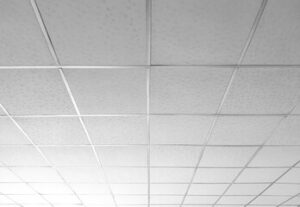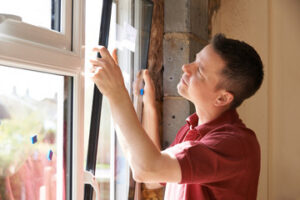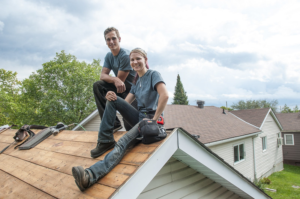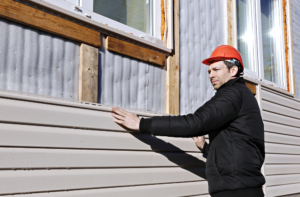Kitchen Remodeling Contractors Bucks County can rejuvenate your home’s style, and boost its value in case you ever decide to sell. It can also make a big difference in your daily lifestyle by cutting your energy bills and decreasing your carbon footprint.

When selecting a contractor to carry out your project, check their licenses and insurances. You should also look for professional associations that signify their commitment to uphold high standards.
Whether you envision a sleek modern culinary space or cozy traditional kitchen, bringing it to life requires the expertise of a professional residential general contractor. A reliable kitchen remodeler will ensure your project meets all state and local building codes, while delivering top-quality workmanship, on time and within budget.
During the hiring process, you should ask your prospective contractor to provide references from past clients, and request a portfolio of completed projects. This will help you gauge their style, craftsmanship, and professionalism. You should also find out if they have the appropriate licenses and insurance to perform kitchen remodels in your area.
Kitchen contractors are more than skilled tradespeople; they are culinary artists who orchestrate a symphony of design, functionality, and craftsmanship. They must understand your vision and breathe life into it, transforming it from a mere plan into a beautiful reality. A reputable kitchen remodeling contractor will take the time to listen and assess your needs, and they will deliver a quality kitchen that fits your lifestyle.
A trustworthy kitchen remodeler will be able to communicate with you throughout the entire renovation process, scheduling tasks to minimize disruptions and ensuring that work is progressing as expected. They should also provide a realistic timeline to complete the job, allowing you to plan accordingly.
During the interview process, you should find out how unexpected costs will be handled, as this may impact your overall renovation budget. You should also discuss the contractor’s relationship with vetted industry vendors to ensure that you receive high-quality products at competitive prices. Membership in professional organizations is another good indicator of a contractor’s dedication to the industry and their adherence to high standards.
Experience
Choosing an experienced kitchen remodel contractor is one of the best ways to ensure that your project runs smoothly from start to finish. Look for contractors who have a history of successful projects and can provide references from past clients. You can also check their online reviews to see what other homeowners are saying about them. Look for consistent positive feedback and be wary of recurring complaints (one offs may just be isolated incidents resulting from differing preferences or misunderstandings).
Ask potential contractors to submit a portfolio of completed projects. Review the photos and descriptions of each project to get a feel for their style and expertise. You can also visit ongoing or completed projects in person to assess the quality of work. Look for contractors who are able to meet your specific needs, such as offering a range of remodeling services or working with specific types of materials.
It’s also important to find out if your contractor has insurance and what their coverage is. A certificate of insurance should be available for verification through local licensing authorities. Insurance protects you from liability should an accident occur during your kitchen remodel. Additionally, check if the contractor is a member of a professional association like NARI or NKBA. These affiliations show a commitment to professionalism and a dedication to the remodeling industry.
In addition to checking the credentials of your potential contractor, you should make sure that they have a valid license. This will ensure that they are qualified and insured to perform the remodel. You should also request a copy of their insurance certificate and verify it with your own insurance provider to ensure that they have general liability and worker’s compensation.
Communication
A good kitchen remodeling contractor will take the time to hear your vision and offer suggestions for how to execute it. They will take measurements and review your existing layout to ensure they understand what you want before providing a quote. This is an important step in making sure the project will be a success.
After narrowing down the list of candidates, check for licensing information online and on social media business profiles. A valid license indicates that the contractor adheres to state regulations and is capable of carrying out your renovations. Certifications from reputable associations like the National Kitchen and Bath Association or professional affiliations with industry organizations also demonstrate dedication to the craft and adherence to high standards.
Ask for references from past clients. Talking to previous customers gives you a sense of the contractor’s reliability, work ethic, and communication style. It is also a great opportunity to learn about the design process and get tips for your own project.
During the interview process, you will need to discuss timelines and milestones, what services are included in the project scope, how the contractor will handle issues or delays, what is required to initiate a change order, payment terms, and more. Keeping these conversations consistent throughout the project is key to maintaining transparency and alignment.
As the project gets underway, a good contractor will provide regular progress reports and site visits. This helps to ensure the project stays on schedule and allows you to address any concerns in real-time. They will also regularly review the budget to ensure that the project remains within financial expectations. This kind of consistent communication fosters trust and helps to avoid unexpected changes and costs.
Transparency
A kitchen remodel is an important investment, and a good contractor will make the process as smooth as possible. Unfortunately, as with any industry, kitchen remodeling contractors are susceptible to dishonest tactics that can cost homeowners time, money and frustration. By understanding red flags, you can protect yourself from untrustworthy contractors and choose the best partner to bring your dream kitchen to life.
Transparency starts with a clear estimate, including all project costs. Be sure to compare estimates from several contractors to ensure you’re getting a fair price. Also, ask whether they have a flat fee structure or charge hourly rates. This will help you determine the best fit for your budget.
In addition to a clear estimate, look for a detailed contract that includes the scope of work, timelines, and payment schedule. This will prevent misunderstandings and unexpected expenses throughout the project.
Ask contractors about their project experience and check references. Also, look for certifications that demonstrate a commitment to professionalism and quality results.
A well-executed kitchen remodel can add value to your home and improve the functionality of your living space. A reputable contractor will be transparent about their pricing and project timelines, and will be willing to answer any questions you may have.
One way to find out if you’re working with an honest contractor is to request references from past clients. Ask them about the contractor’s responsiveness and if they were open to client input during the remodeling process. A positive response from previous customers indicates that the contractor values transparency and open communication throughout the project.
Organization
A kitchen remodel is a complex project. Hiring a kitchen remodeling contractor can make the experience less stressful and ensure that the work meets industry standards. A reputable contractor will provide clear communication about the renovation process, timelines, budgetary considerations, and design preferences. They will also have a system for handling any disagreements or conflicts that may arise during the project.
Kitchen remodel contractors bring specialized knowledge of kitchen design and construction techniques. They can help you determine the best layout for your space, optimizing the “work triangle” and ensuring that your cabinets, refrigerator, and oven are within an ideal distance from one another. They can also recommend creative solutions to maximize storage and functionality, such as lazy susans in corner cabinets or custom pull-out shelves.
Hiring a kitchen remodeling contractor can save you time and money. They can handle many of the complex details associated with a kitchen renovation, including navigating building codes, obtaining permits, and hiring subcontractors like electricians and plumbers. They can also help you find the right materials, ensuring that your project is on schedule and stays on budget.
When choosing a kitchen remodeling contractor, it is important to ask for references and verify their credentials. You should also look for a licensed, insured, and bonded professional who can be trusted to deliver quality work. To find a qualified contractor, you can use online searches, directories, and member organizations. In addition, you can ask for recommendations from friends and family. It is also a good idea to meet with multiple contractors and discuss their experiences and qualifications. This will allow you to choose the one who is the right fit for your remodel.



